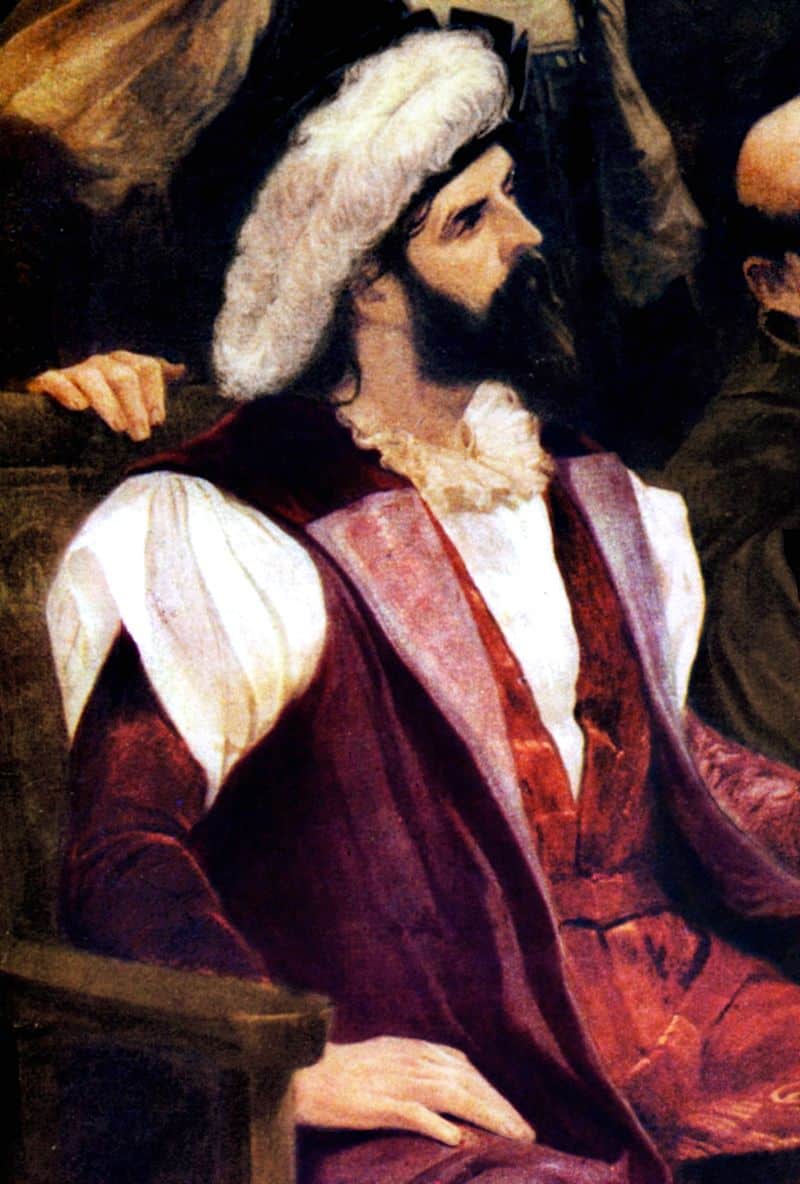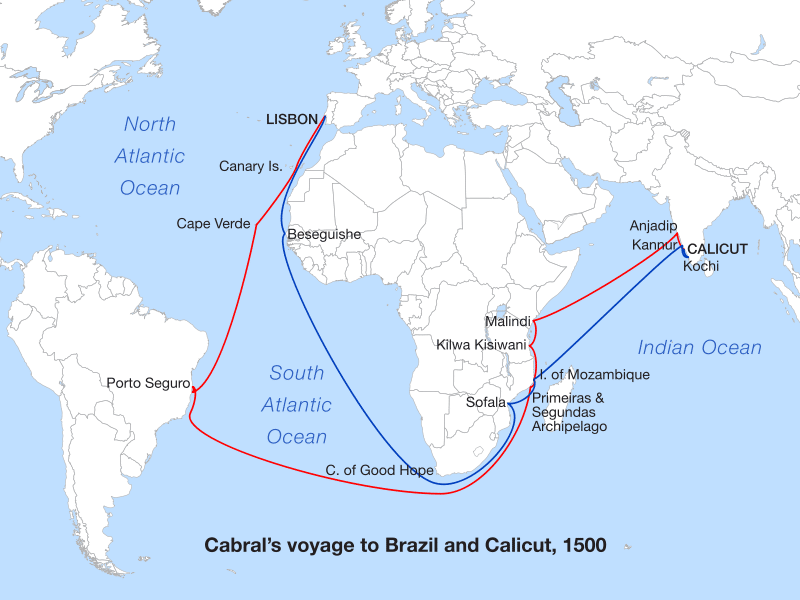Pedro Alvares Cabral is a famous explorer and one of the more popular Portuguese explorers in world history, but due to a quarrel with a king that led to early retirement, his accomplishments were mostly forgotten. He is credited with the discovery of Brazil, the largest and only Portuguese-speaking country in South America.

His discoveries would create more wealth for the small coastal nation of Portugal and lay the foundation for the Portuguese Empire.
Early Life
Pedro Alvares Cabral is believed to be born in Belmonte, Portugal, in 1468. His father was Fernao Alvares Cabral and Isabel Gouveia, and had 11 siblings. He would not use his father's surname until the death of his older brother in 1503. At that point, he changed his name from Pedra Alvares de Gouveia to Pedro Alvares Cabral.
The change was due to his family's Coat of Arms, which was drawn with two purple goats on a field of silver. Only his elder brother was entitled to make use of the family arms, but after his death, the usage passed to Pedro.
Cabral's family history held much mystique.
Family legend has it that the Cabrals were descendants of Caranus, the legendary first king of Macedonia. Caranus was a supposed 7th generation scion of Hercules, son of Zeus. While the legend is false, it does provide clues as to the true origin of the Cabral name.
Cabral is another form of Cabrais, which was a Castilian clan name. Castile was once a powerful clan within the lands of Modern Spain. Isabella, the wife of Ferdinand, who, along with her husband, sponsored the voyage of Christopher Columbus, was Castilian. The Castilians would be enemies of the Portuguese.
The 14th century is when the Cabral family rose to fame in Portugal. They did so because of the skill and loyalty of Alvaro Gil Cabral to Dom Joao I, the King of Portugal. Alvaro Gil Cabral helped fight and defeat the King of Castile. In response to his loyalty, the king presented Alvaro with the hereditary fiefdom of Belmonte.
This lower nobility of the Cabral family would give Pedro more opportunities. At 12 years old, he was sent to the court of King Dom Afonso V. While at court. He would become educated in various liberal arts and be given the minor title of moco Fidalgo. He had begun his ascent in the nobility and during different kings.
Mariner Career
Pedro Alvares Cabral was appointed to Major Captain on February 15, 1500, to a fleet sailing for India. It was common practice at the time to give naval command of vessels to nobility regardless of their ability. This would have been the case for the ships under Cabral's command. The obvious weakness of this was that the noble may not have the ability to command a ship or even any relevant experience.
It is not known if Cabral had much experience when he was chosen for this position.
Cabral became the military chief, while far more experienced navigators were seconded to the expedition to aid him in naval matters. The most important of these were Bartolomeu Dias, Diogo Dias, and Nicolau Coelho. They would, along with the other captains, command 13 ships and 1,500 men. Of this contingent, 700 were soldiers, although most were simple commoners who had no training or previous experience in combat.
The fleet had two divisions:
- The Calicut division: This division's mission was to sail to Calicut in India to establish trade relations and a factory.
- The Sofala division: This division's mission was to sail to Sofala, which is modern-day Mozambique.
The goal of these missions was to bring back an assortment of spices that could be sold. These spices were popular and rare and would turn a large profit.
Cabral set sail and passed the Canary Islands and Cape Verde Islands off the coast of Africa. He was to follow the same route as Vasco da Gama had used to reach India. While trying to stay on course, he would sail too far southwest in the Atlantic Ocean and would come in contact with the coast of South America. This was new land that was not known to the Europeans, and Cabral quickly realized (unlike Christopher Columbus) that the land he had reached was not India and possibly a new chunk of land.

He and his fleet dropped anchor off the coast and stayed for 10 days. He sent two ships back to Portugal to tell the king of the new land that was discovered. Anxious to continue his trip to India, Cabral left two of his crewmen behind and set sail towards India.
His fleet would approach the Cape of Good Hope and run into severe storms. Four of his ships would be lost, which would include the famous explorer Bartolomeu Dias. All of the men aboard the four ships died. Cabral was now left with 6 ships and continued on towards India.
He stopped at many different African ports in the Indian Ocean. This would include Sofala, Mozambique, and Kilwa. The natives were not friendly, and the crew did not have much luck trading. They also had a conflict with native Arabs, which led to the death of some of his crewmen, and in retaliation, he would capture ten Arab ships, raid one of their cities, and execute the crew.
He would continue his trek to India, where he continued to trade with Indian cities before he began his return voyage to Portugal. He arrived in Lisbon in July 1501.
Upon his return, Pedro Alvares Cabral received a mixed welcome. He did not help relations with those he came in contact with. Half of his fleet was lost, and although he had discovered a new land, the original intent of the mission was unsuccessful.
Legacy and Death
He eventually married and had six children. He led a quiet life and died in relative obscurity.
His accomplishments were overshadowed by Vasco da Gama in Portugal. However, over time, his name would become infamous in Brazil. He would become known as their founder, and statues would be erected for him.
Brazil would go on to become the largest Portuguese-speaking country in the world and become many times the size of the mother country. If they had never recognized him as the one who discovered the coast of South America, then he would probably be lost to history instead of one of the most popular explorers in World History.
